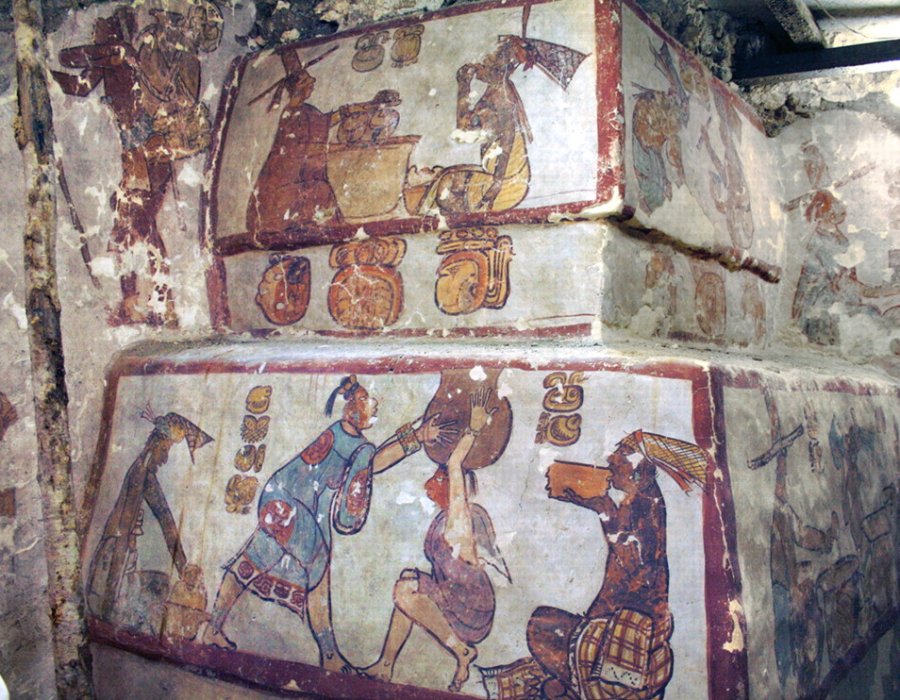Calakmul Was Powerful Ancient Maya Seat Of The Snake Kingdom
A. Sutherland - AncientPages.com - One of the three largest and most important Mayan city-states, next to Tikal (Guatemala) and Palenque, was Calakmul ("City of the Two Adjacent Pyramids"). The ruins of this once-powerful Maya city-state were discovered in the 1930s.
Calakmul is one of the finest representations of the Maya Culture. Credit: Adobe Stock - Jon Ortiz
In the days of splendor, Calakmul was ruled by the dynasty of the Serpents. The city was once the capital of a large regional power in the Classic period in Maya history.
It was also one of two superpowers. The other was - Tikal. For several centuries, Calakmul represented the seat of the Snake Kingdom because of its important snake head dynastic glyph (written now as "Kaan" and pronounced as "chaan").
Today, it is an ancient Maya archaeological site located 35 km (22 miles) from the Guatemala border, surrounded by the jungle of the greater Petén Basin region in the Mexican state of Campeche.
In its center, Calakmul had probably a population of about 50,000 people and was the seat of the Snake (Kaan) Kingdom, of which rulers reigned during most of the Classic period. It has recently been suggested that Dzibanche was their first capital, which was later relocated to the site of Calakmul.
These rulers identified themselves as Divine Lords of the Snake ("k'uhul kaanal ajaw"). Generally, the Mayas did not have expansive military ambitions, but the Lords of the Snake were rather unique. Their first capital was Dzibanche, and from there, they expanded to present-day north Guatemala, Belize, and the Mexican state of Campeche. Still, they were eventually stopped and defeated by the Tikal rulers.
The 1930s surveys mapped Calakmal and recorded 103 stelae (carved, commemorative stone slabs) at the site. It also has a number of very beautiful murals depicting scenes of the Maya inhabitants giving, receiving, and consuming food products, as well as displaying and transporting other goods. The murals of Calakmulare are believed to be the most unique pieces of art that can be found in the Maya world.
The front of the house of the mouth of the snake. Credit: Adobe Stock - ahau1969
Until now, as many as 6250 different ancient structures have been identified at the site, which covers an area of about 2 square kilometers (0.77 sq mi).
Calakmul was probably first established around 600 BC. According to sources, Calakmul's two monumental pyramids were built between 300 BC and 250 AD. One is over 45 meters (148 ft) high, a north-facing structure with a base measuring 120 meters (390 ft) square. The other is 50 meters (165 feet) high and measures over 130 meters (400 feet) in circumference.
Like many temples or pyramids within Mesoamerica, the pyramids at Calakmul were built on earlier pyramidal structures.
Reservoirs And Water Canals Of Calakmul
A wide network of canals and water reservoirs surrounds Calakmul. In the Maya times, Calakmul and its surroundings had the perfect conditions for farming because crops were cultivated near surrounding lowlands known as “bajos” (swamps).
However, it did not mean that Calamul’s inhabitants had enough drinking water; the ancient Maya were a resourceful culture. They constructed “aguadas” to store seasonal rainwater. As many as thirteen such surface reservoirs have been discovered, the largest of which is the structure measuring 242 by 212 meters (794 by 696 feet).
The southeast corner of Structure Sub 1–4 of the Chiik Nahb complex, Calakmul. Credit: Pnas
Calakmul’s sacbes are another interesting idea of the ancient Maya. Eight causeways (sacbe) have been discovered around Calakmul. Two of these have been mapped, three have been identified visually on the ground, and three more identified with remote sensing. The sacbes connected Calakmul with suburban neighboring sites and with other places like El Mirador and El Tintal.
Until recently, not much was known about it. Now, thanks to the work of archaeologists, more and more new facts have come to light. We have to remember that it’s not easy to excavate in this part of the world because of the hot climate and deep, dense jungle that disturb archaeological works.
Updated on November 30, 2023
Written by – A. Sutherland - AncientPages.com Senior Staff Writer
Copyright © AncientPages.com All rights reserved. This material may not be published, broadcast, rewritten or redistributed in whole or part without the express written permission of AncientPages.com
Expand for referencesMore From Ancient Pages
-
 Oldest Known Sami Manuscript Discovered – It’s Undeciphered And Written By An Unknown Author
Linguistic Discoveries | Nov 26, 2024
Oldest Known Sami Manuscript Discovered – It’s Undeciphered And Written By An Unknown Author
Linguistic Discoveries | Nov 26, 2024 -
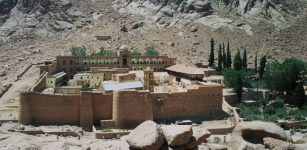 Ancient Scriptures With Lost Languages Discovered Inside Saint Catherine’s Monastery On The Sinai Peninsula
Archaeology | Aug 29, 2017
Ancient Scriptures With Lost Languages Discovered Inside Saint Catherine’s Monastery On The Sinai Peninsula
Archaeology | Aug 29, 2017 -
 God Of The Gallows And How Odin Hanged Himself From Yggdrasil To Know Secrets Of Runes
Featured Stories | May 7, 2018
God Of The Gallows And How Odin Hanged Himself From Yggdrasil To Know Secrets Of Runes
Featured Stories | May 7, 2018 -
 Strange Ancient Abduction Case And Mysterious Journey To A Snake King’s Palace In A Parallel World
Ancient Mysteries | May 1, 2021
Strange Ancient Abduction Case And Mysterious Journey To A Snake King’s Palace In A Parallel World
Ancient Mysteries | May 1, 2021 -
 Controversial “Life Of St. Issa” Scroll Reveals Jesus Spent Several Years In India And Tibet
Ancient Mysteries | Nov 4, 2014
Controversial “Life Of St. Issa” Scroll Reveals Jesus Spent Several Years In India And Tibet
Ancient Mysteries | Nov 4, 2014 -
 Legend: Strange Encounter With The Fairies In The Land Of The Light
Myths & Legends | Oct 14, 2024
Legend: Strange Encounter With The Fairies In The Land Of The Light
Myths & Legends | Oct 14, 2024 -
 Bartolomeo Colleoni: Most Respected Mercenary General Of The 15th Century Italy
Featured Stories | Sep 10, 2019
Bartolomeo Colleoni: Most Respected Mercenary General Of The 15th Century Italy
Featured Stories | Sep 10, 2019 -
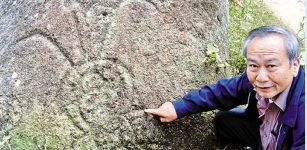 Extraterrestrial Visit Recorded On Stone: They Came From The Stars
Featured Stories | May 4, 2014
Extraterrestrial Visit Recorded On Stone: They Came From The Stars
Featured Stories | May 4, 2014 -
 The Faery Grail Of Hospitality And Accord- The Forgotten Story – Part 1
Ancient Mysteries | Sep 25, 2019
The Faery Grail Of Hospitality And Accord- The Forgotten Story – Part 1
Ancient Mysteries | Sep 25, 2019 -
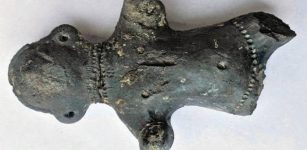 Evidence Of Sangam Age Settlement Unearthed At Nangur, Tamil Nadu
Archaeology | Jul 11, 2019
Evidence Of Sangam Age Settlement Unearthed At Nangur, Tamil Nadu
Archaeology | Jul 11, 2019 -
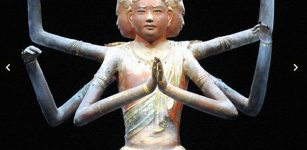 CT Scan Reveals Repairs And Damage Of 1,300-Year-Old Three-Headed And Six-Armed Statue
Archaeology | Feb 23, 2017
CT Scan Reveals Repairs And Damage Of 1,300-Year-Old Three-Headed And Six-Armed Statue
Archaeology | Feb 23, 2017 -
 Morrígan: Shape-Shifting Phantom Queen And Her Meeting With Irish Hero Cuchulainn
Celtic Mythology | Aug 7, 2017
Morrígan: Shape-Shifting Phantom Queen And Her Meeting With Irish Hero Cuchulainn
Celtic Mythology | Aug 7, 2017 -
 Sunken Land Of Lyonesse: Legendary Kingdom That Influenced Stories Of Writers And Fishermen
Featured Stories | Mar 16, 2017
Sunken Land Of Lyonesse: Legendary Kingdom That Influenced Stories Of Writers And Fishermen
Featured Stories | Mar 16, 2017 -
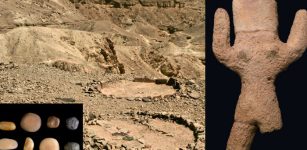 Ancient Artifacts Used In Magical Rituals To Ward Off The Evil Eye Found Next To The Pilgrimage Road
Archaeology | Sep 11, 2023
Ancient Artifacts Used In Magical Rituals To Ward Off The Evil Eye Found Next To The Pilgrimage Road
Archaeology | Sep 11, 2023 -
 7,000-Year-Old Grains Hints At Origin Of Swiss Pile Dwellings
Archaeology | Mar 3, 2022
7,000-Year-Old Grains Hints At Origin Of Swiss Pile Dwellings
Archaeology | Mar 3, 2022 -
 Mysterious City Lost In The Sands And Its Hidden Treasures
Ancient Mysteries | May 21, 2018
Mysterious City Lost In The Sands And Its Hidden Treasures
Ancient Mysteries | May 21, 2018 -
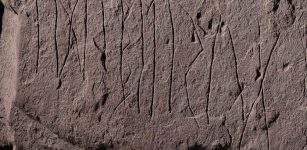 Mysterious Svingerud Stone – World’s Oldest Rune Stone With Enigmatic Inscriptions Investigated By Experts – What Does It Say?
Archaeology | Jan 17, 2023
Mysterious Svingerud Stone – World’s Oldest Rune Stone With Enigmatic Inscriptions Investigated By Experts – What Does It Say?
Archaeology | Jan 17, 2023 -
 Evidence Of An Unknown Neolithic Society At Oued Beht In North Africa Discovered
Archaeology | Sep 30, 2024
Evidence Of An Unknown Neolithic Society At Oued Beht In North Africa Discovered
Archaeology | Sep 30, 2024 -
 Mythical Underground Labyrinth And Legendary Long-Lost Golden Tomb Found In Italy?
Featured Stories | Nov 21, 2024
Mythical Underground Labyrinth And Legendary Long-Lost Golden Tomb Found In Italy?
Featured Stories | Nov 21, 2024 -
 Mystery Of Count St. Germain – He Claimed To Have Lived For Several Centuries
Ancient Mysteries | Sep 4, 2014
Mystery Of Count St. Germain – He Claimed To Have Lived For Several Centuries
Ancient Mysteries | Sep 4, 2014



